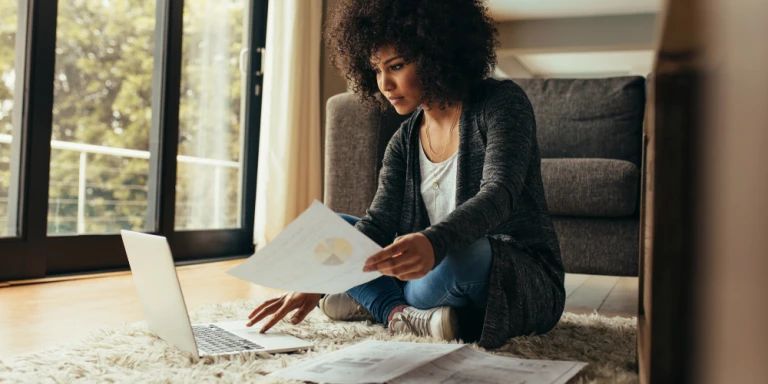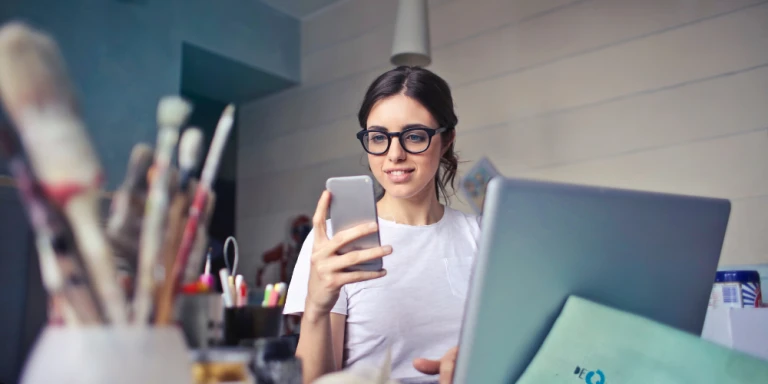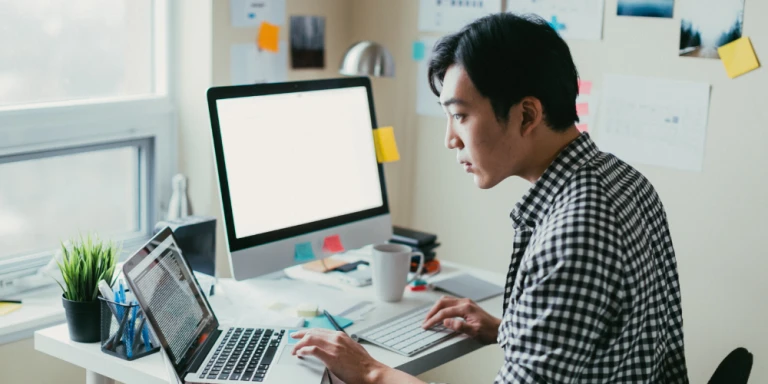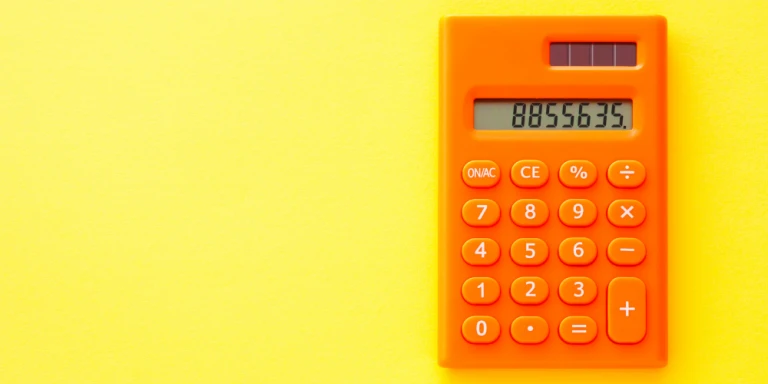An entrepreneurs' guide to charging and reclaiming VAT
HOME / / An entrepreneurs' guide to charging and reclaiming VAT

What is VAT?
VAT is Value-Added Tax, a surcharge applied to the majority of goods and services in the UK.
As a customer, you’ll often see it listed on receipts and invoices. And it is automatically included in the price of goods you buy in the shops.
As a business owner, however, your relationship with VAT is more complex.
If your business hits more than £85,000 in VAT-taxable turnover each year, you need to become VAT-registered.
This means you need to add VAT onto the products or services you sell. Don’t get excited though. You don’t get to keep it! You have to pass that VAT on to the Government.
Basically, when you’re VAT-registered, you are an unpaid tax collector for HMRC. However, there are benefits. Which brings us on to output and input VAT…
What are output and input VAT?
Two terms you’ll definitely need to know as a VAT-registered business are output VAT and input VAT.
Output VAT is the VAT you have to charge your customers, and input VAT is the VAT you pay on goods or services you buy as a business.
If your input VAT is more than your output VAT during any given VAT accounting period, you get to reclaim it. Put simply, if you pay more VAT than you charge, you'll get the difference back from the tax man.
Terms and conditions apply, so speak to your accountant if you need more information.

Do I need to register for VAT?
You need to become VAT-registered if your VAT-taxable turnover is more than £85,000 (see below).
Your VAT-taxable turnover is the total value of everything you sell that is NOT exempt from VAT.
You can voluntarily register at any time but, LEGALLY, you must register with HMRC within 30-days of meeting the criteria below:
If, over any rolling 12-month period, your VAT-taxable turnover exceeds £85,000
You anticipate that your VAT-taxable turnover would exceed the threshold in any 30-day period
Even if you only sell goods or services that are exempt from VAT, then you are still eligible to register if you purchase goods to use in your business to the value of more than the threshold from VAT-registered suppliers in the EU
How do I become VAT registered?
Most businesses can register online - including partnerships and a group of companies registering under one VAT number.
By doing this you’ll register for VAT and create a VAT online account (sometimes known as a ‘Government Gateway account’).
You need this to submit your VAT Returns to HM Revenue and Customs (HMRC).

What are my responsibilities when I’m VAT-registered?
When you are VAT-registered, you must apply VAT to all of your sales, at the appropriate rate (see below).
You’ll also have to complete relevant VAT records (see below) and submit a VAT Return to HMRC every three months.
What does a VAT return include?
Your VAT return includes your total sales and purchases, how much VAT you owe and how much VAT you can reclaim. A VAT return usually covers a three-month period.
What VAT records do I need to keep?
At the time of writing (August 2020), the Government is in the process of ‘Making Tax Digital’ and that includes VAT. This is great news for business owners because using software to work out your VAT liabilities is much quicker and easier than sorting spreadsheets or paper records.
VAT-registered businesses need to:
keep records or sales and purchases
keep a separate summary of VAT called a VAT account
issue correct VAT invoices
You usually have to keep VAT records for 6 years. This can be on paper, electronically or in your bookkeeping software.
If you do sign up for the Government’s ‘Making Tax Digital for VAT’ programme – which we think is a no-brainer - you’ll need to keep a digital record of everything that is needed for your VAT Return.

How do I charge VAT?
In a shop, your displayed prices must include VAT at the correct rate.
If you invoice customers, you need to use a ‘VAT invoice’ which shows the VAT charged on each product or service.
It is important to use a suitable invoice as these can be checked if you’re subject to a VAT inspection and they must be compliant with VAT rules.
All of your transactions that are liable for VAT must be recorded in your VAT account and the amount must be shown on your VAT return.
It is worth hiring an accountant, bookkeeper or using specialist software to help ensure you record the correct information.
How do I reclaim VAT / claim a VAT refund?
To reclaim VAT you must make a claim through your VAT 3 return. It’s important that in order to do this successfully, you keep the appropriate purchase records to support your claim. This includes valid VAT invoices and relevant customs receipts.
There are certain items that you can’t reclaim VAT on - even if you are registered for VAT. These include:
Food & drink for yourself, agents or employees (there are some very select exemptions to this if these purchases are part of a taxable supply of services - as with all information around finances and tax, we suggest contacting an expert if you are unsure)
Anything for private use
Accomodation (other than certain qualifying accomodation used when attending a qualifying conference)
Entertainment (essentially schmoozing and other business entertainment costs)
Petrol (other than petrol used as stock-in-trade)
Passenger motor vehicles (less than 10 passengers and excluding qualifying vehicles)

What are the VAT rates in the UK?
There are currently three VAT rates in the UK, plus VAT Exempt goods.
Standard Rate - 20%
Most goods and services
Reduced Rate - 5%
Some goods and services, such as children's car seats and home energy
Zero Rate - 0% (as you might expect!)
Some goods and services, such as most food and children's clothes
VAT Exempt
You don’t have to charge VAT on these but you do still have to record the transaction in your accounts.
How do I know what VAT rate applies to my products or services?
You can find out how much VAT you should be charging by visiting the GOV.UK website, which lists the VAT rates on different goods and services and the VAT notices in alphabetical order.
What products and services are exempt from VAT?
There’s a whole host of goods and services that are exempt from VAT - but we’ll just list the main ones here that may be of interest to entrepreneurs and small businesses:
Most financial services, including insurance, finance and credit services
Education and training services
Stamps
Charity fundraising events
Funeral costs
Subscriptions to membership organisations
Selling, leasing and letting of commercial land and buildings (although this exemption can be waived)
If you are a business that only sells the above goods and services then your business is exempt from VAT - meaning you cannot register for VAT or recover any VAT that you pay on purchases or expenses.

What's the difference between Zero Rate VAT and VAT Exempt goods?
The key difference is that Zero-Rated goods are still VAT-taxable - you just don’t charge your customers VAT. You still have to record any sales of Zero-Rated goods in your accounts and make sure they are declared on your VAT return to HMRC. Declaring them in this way means that you can reclaim the VAT on your expenses.
What products and services qualify for Zero Rate (0%) VAT?
As above, we will list a selection of products and services that are eligible for 0% VAT. A full guide can be found here.
Babywear
Children’s clothes and footwear
CE marked cycle helmets
Motorcycle helmets that meet safety standards
Other protective clothing - boots etc.
Most construction activities
Books, children’s painting and picture books, maps and charts, magazines, newspapers, printed or copied music
Printing brochures, leaflets or pamphlets
Aircraft and ship repair and maintenance
Sewerage services, including cesspools and septic tank emptying
Equipment for disabled and blind or partially sighted people
Building services for disabled people
Still confused? Don’t worry!
If you’re new to the world of charging and reclaiming VAT, then all of this information can be a bit overwhelming. We strongly suggest contacting the HMRC, and seeking expert advice if you are unsure.
Looking for small business finance?
Transmit Startups helped over 15,000 small businesses to start up and scale up. If you've been trading for under three years, you could be eligible for an affordable Start Up Loan.
Find out how much you could borrow with our Start Up Loan calculator.


"We’re delighted to be the 2000th loan recipients!"
